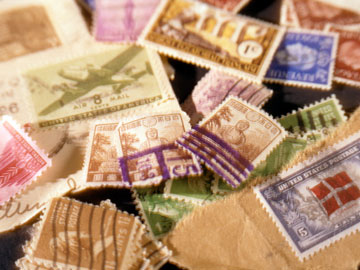
Do you think you’ve got portfolio diversification licked? If you don’t have a stamp collection, you may be missing out on a proven asset class.
Rare stamps are stable assets, rising in value through world wars, economic crashes and periods of hyperinflation.
A 2009 study by two finance professors, Elroy Dimson at London Business School and Christophe Spaenjers at HEC Paris, tracked the investment performance of British collectible postage stamps between 1900 and 2008.
Their study, Ex Post: The Investment Performance of Collectible Stamps, pegs annualized return on stamps at 7% in nominal terms, or 2.9% in real terms.
As with most collectables, rarity and condition are the key factors determining value. The countless “commemorative” stamp collections postal agencies around the world issue in large lots each year rarely increase their worth beyond the face-value of the postage.
“You probably want to invest at the higher end of the market,” says Spaenjers. “The rare stamps in excellent condition will always be sought after by philatelists and can, therefore, serve as a store of value.”
The high-end, however, can be very high indeed. In June 2014, an 1856 British Guiana one-cent Magenta – the only one of its kind in the world – set a new record price for a stamp when it sold at a Sotheby’s auction for $9.5 million. The most-valuable Canadian stamp, a two-cent “Large Queen on laid paper,” that was printed in 1868, is currently valued at $250,000. Only three are known to exist.
As with any investment, there are risks. One of the biggest is buying one of the many fakes on the market. “Buying through qualified dealers or auction houses can minimize the risk of buying fakes or stamps of lower quality,” says Spaenjers. “Catalogues and recent auction results are tools that help in estimating valuations.”
Transaction costs can also be high, up to 25% at auction, and there are also insurance and storage fees to consider for a truly valuable collection.
The other risk is waning interest. “Stamp collecting may fall out of fashion, so the fundamental values of stamps go down,” says Spaenjers. “And since stamp collecting is ultimately a form of luxury consumption, prices may be correlated with the movements of the equity market, providing less diversification than hoped.”
Stamp collecting peaked in the 1960s and 1970s, followed by a market crash in the 1980s. And while younger generations don’t seem as interested in the hobby, stamp collecting remains one of the world’s most popular hobbies, with millions of collectors around the world spending about $10 billion a year on stamps.
“Whilst many other asset classes continue to flounder in the current worldwide economic crisis, the world’s most sought-after stamp [the Penny Black, the world’s first adhesive postage stamp] went up in value this year by 17%,” says Michael Hall, CEO of auction house Stanley Gibbons. “Over the last 10 years, it has shown a rise of 243%—an enviable consistency of performance.”
There’s a reason why Penny Blacks have proven to be one of the safest ways to store and grow wealth. “You can print more money, mine more gold, create more unit trust, [but] you can’t print more Penny Blacks,” says Hall.
One thing for certain is that collectables are not a short-term investment, which is why almost all the popular stamp indices track long-term performance while calculating price growth annually.
The most popular indices include Stanley Gibbons’s GB30 Rarities Index, SG100 Rare Stamp Price Index and Commonwealth Rarities Index, and Fraser’s Rarities Index.
If you do decide to become a “philatelist” and add stamps to your portfolio, you’ll be in good company. Notable collectors include the British Royal Family, the Rothschilds, Eli Lilly, Warren Buffett and Bill Gross of PIMCO.
A recent Barclays Bank study finds affluent people have about 10% of their wealth in collectibles. The same study reveals about 12% of collectors own stamps purely as an investment.
“Having a small part of your net worth invested in stamps seems reasonable if you’re getting both a non-financial dividend from the pleasure of owning [them], as well as some portfolio diversification,” says Spaenjers.
